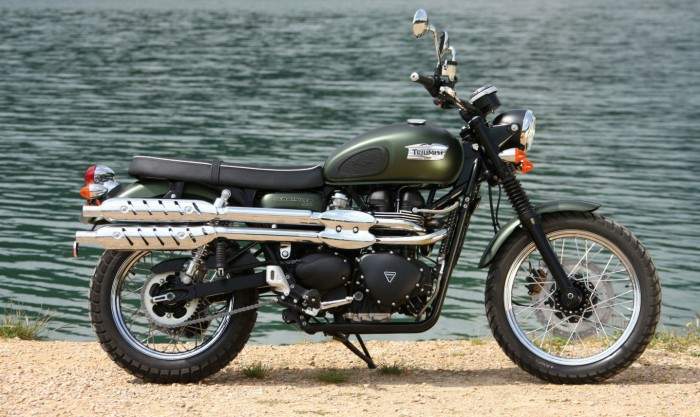
|
|
|
|
|
|
Classic Bikes
Custom Bikes
Individual
Racing Bikes AJP
AJS
Aprilia
Ariel
Avinton / Wakan
Bajaj
Benelli
Beta
Bimota
BMW
Brough Superior
BRP Cam-Am
BSA
Buell / EBR
Bultaco
Cagiva
Campagna
CCM
CF Moto
Combat Motors
Derbi
Deus
Ducati
Excelsior
GASGAS
Ghezzi Brian
Gilera
GIMA
Harley Davidson
Hero
Highland
Honda
Horex
Husaberg
Husqvarna
Hyosung
Indian
Jawa
Kawasaki
KTM
KYMCO
Laverda
Lazareth
Magni
Maico
Mash
Matchless
Mondial
Moto Guzzi
Moto Morini
MV Agusta
MZ / MuZ
NCR
Norton
NSU
Paton
Peugeot
Piaggio
Revival Cycles
Roland Sands
Royal Enfield
Sachs
Sherco
Sunbeam
Suzuki
SWM
SYM
Triumph
TVS
Ural
Velocette
Vespa
Victory
Vincent
VOR
Voxan
Vyrus
Walt Siegl
Walz
Wrenchmonkees
Wunderlich
XTR / Radical
Yamaha
Zero
Video
Technical
Complete Manufacturer List
|
Triumph Scrambler
Inspired by the 60’s Triumph off road sports motorcycles that
were stripped down for a purpose, the Scrambler demands attention wherever it
goes with its own purposeful look.

Review:
With a dual-sport, high-pipe style made
famous by the likes of Steve McQueen, the TR6-influenced Triumph
Scrambler exudes cool. From the white piping around the edge of the
wide, flat two-up seat to the dual, upswept chrome pipes with
slotted heat guards, it is a real eye-catcher. While having lunch at
a sidewalk café with the Scrambler parked across the street, I
smiled at how many folks stopped to admire the bike. Like the other
retro rides, it looks like a classic even though it’s
brand-spanking-new. Review: Rider Magazine
|
|
|
Any corrections or more information on these motorcycles will be kindly appreciated. |